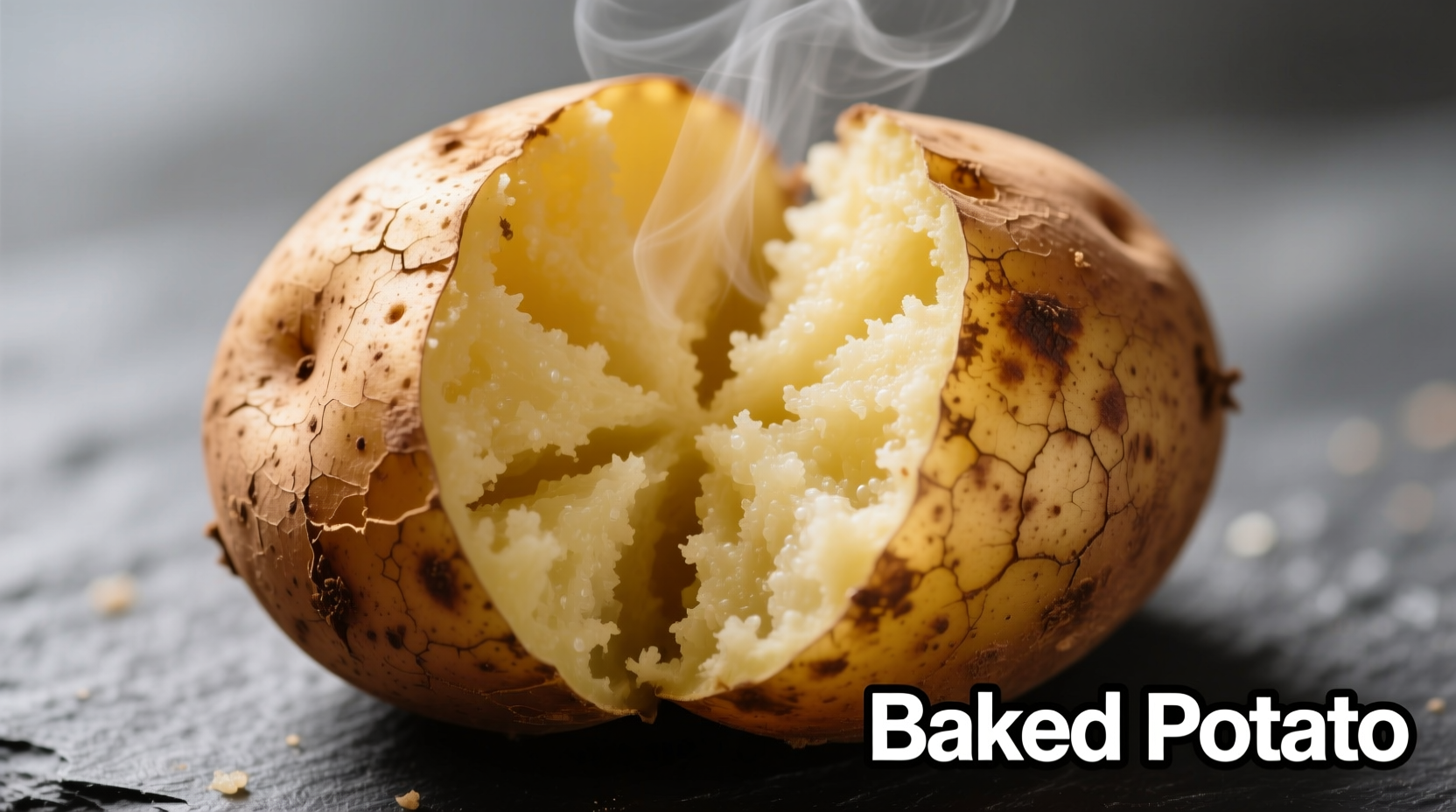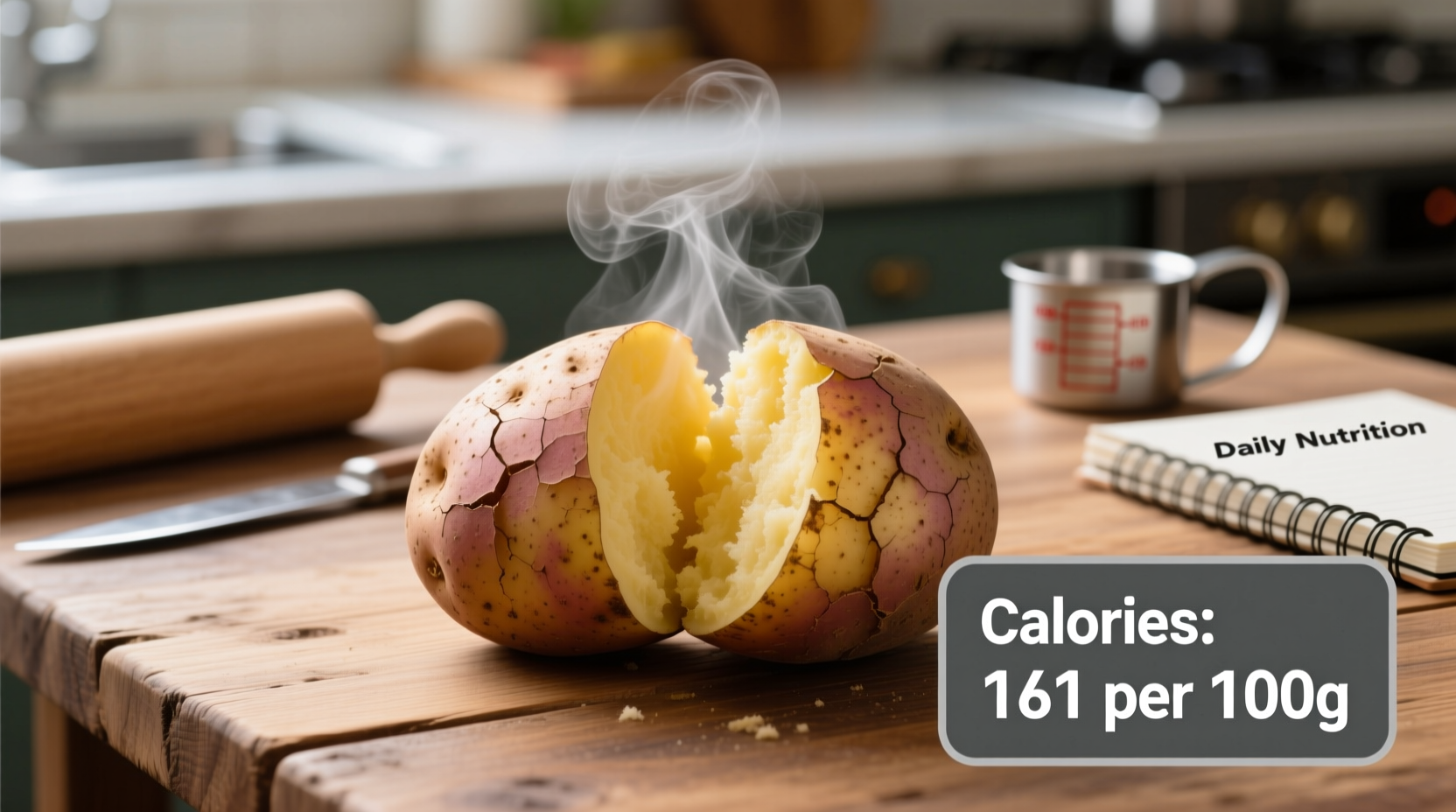Understanding the precise calorie content of baked potatoes helps you make informed dietary choices without sacrificing satisfaction. Whether you're tracking macros, managing weight, or simply curious about this versatile staple, knowing how preparation methods and portion sizes impact nutritional value transforms how you incorporate potatoes into your eating plan.
How Size Determines Calorie Content
Not all baked potatoes deliver the same calorie count. The USDA's comprehensive food database reveals significant variations based solely on size. Selecting the right portion helps align with your dietary goals while enjoying this nutrient-dense food.
| Size Category | Weight (grams) | Calories | Carbohydrates | Fiber |
|---|---|---|---|---|
| Small (2" diameter) | 138g | 129 | 29.6g | 2.1g |
| Medium (3" diameter) | 156g | 145 | 33.5g | 3.8g |
| Large (3.5" diameter) | 278g | 259 | 59.8g | 6.3g |
| Extra-Large (4"+ diameter) | 369g | 344 | 79.6g | 8.4g |
Data sourced from USDA FoodData Central (Release 1.20.1) shows that size represents the most significant variable in calorie calculation. Many restaurant portions qualify as large or extra-large, potentially doubling or tripling the calorie count of a standard medium potato.
Nutritional Benefits Beyond Calories
Baked potatoes offer substantial nutritional advantages that extend far beyond their calorie content. The skin contains nearly half the fiber, making it essential for maximizing benefits. According to research published in the American Journal of Clinical Nutrition, whole potatoes provide sustained energy release due to their resistant starch content, which increases when cooled after cooking.
One medium potato delivers:
- 27% of daily vitamin C needs (supports immune function)
- 26% of vitamin B6 (essential for metabolism)
- 20% of potassium (critical for blood pressure regulation)
- 12% of magnesium (supports muscle and nerve function)

Topping Impact: From Healthy to High-Calorie
Your topping choices dramatically alter the nutritional profile of a baked potato. While the base potato remains nutrient-dense, common additions can transform it from a diet-friendly option to a calorie-dense meal. Understanding these impacts helps maintain your dietary goals without feeling deprived.
Consider these topping scenarios for a medium potato:
- Plain with skin: 161 calories, 3.6g fiber
- With 2 tbsp sour cream: +52 calories, +5g fat
- With 1 tbsp butter: +102 calories, +11g fat
- With 1/4 cup chili (no beans): +150 calories, +7g protein
- With 2 tbsp chives and Greek yogurt: +35 calories, +4g protein
The Mayo Clinic recommends Greek yogurt, steamed broccoli, and black beans as nutrient-boosting toppings that add minimal calories while increasing protein and fiber content.
Baked vs. Other Preparation Methods
Cooking method significantly impacts both calorie content and nutritional value. Baking preserves more nutrients compared to boiling, which leaches water-soluble vitamins into cooking water. Understanding these differences helps you make preparation choices aligned with your health objectives.
Per 150g serving:
- Baked potato with skin: 161 calories, highest fiber content
- Boiled potato (no skin): 134 calories, 2.3g fiber (37% less than baked with skin)
- Mashed (with milk, no butter): 142 calories, 2.1g fiber
- French fries (fast food): 312 calories, 3.4g fiber, 15g fat
A 2022 study in Nutrients Journal confirmed that baking preserves 90% of vitamin C content compared to 70% retention in boiling. The dry heat of baking also concentrates flavors, reducing the need for high-calorie additions.
Practical Integration into Dietary Plans
Baked potatoes fit well within various eating approaches when portion-controlled. For weight management, registered dietitians recommend treating potatoes as your carbohydrate source rather than an additional starch. Pair with lean protein and non-starchy vegetables for balanced meals.
Effective strategies include:
- Using a food scale initially to understand proper portions
- Choosing medium potatoes (5-6 oz) as standard servings
- Adding protein sources like grilled chicken or black beans to increase satiety
- Opting for vinegar-based toppings instead of high-fat options
- Enjoying cooled potatoes to increase resistant starch content
The American Diabetes Association recognizes potatoes as acceptable within diabetes meal plans when properly portioned. Their glycemic index ranges from 53-78 depending on preparation, placing them in the medium range when eaten with skin.











 浙公网安备
33010002000092号
浙公网安备
33010002000092号 浙B2-20120091-4
浙B2-20120091-4